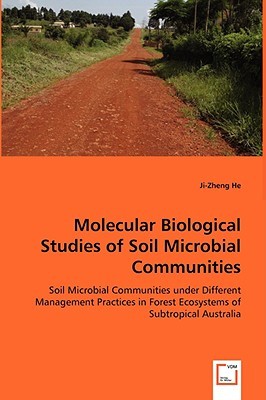
- We will send in 10–14 business days.
- Author: Ji-Zheng He
- Publisher: VDM Verlag Dr. Mueller E.K.
- Year: 2008
- Pages: 272
- ISBN-10: 3639001915
- ISBN-13: 9783639001914
- Format: 15.2 x 22.9 x 1.5 cm, minkšti viršeliai
- Language: English
- SAVE -10% with code: EXTRA
Molecular Biological Studies of Soil Microbial Communities (e-book) (used book) | bookbook.eu
Reviews
Description
Advances in microbial ecology are sometimes driven by new tech-niques. Over the past two decades, methods to analyzing soil micro-bial communities have changed dramatically. Many new methods and approaches are developed and now available, allowing our soil scien-tists to access to the uncultivated soil microorganisms and allowing for better assessments of soil microbial diversity. This book demonstrates the applications of some molecular biological methods in the studies of soil microbial communities, including soil microbial DNA extraction and purification, PCR amplification using 16S rRNA and 18S rRNA genes, TGGE, SSCP, cloning, sequencing and phylogenetic analyses. It shows the technical problems and solutions often faced by investigators in soil microbial ecology. It also gives two successful case studies of forest soils in subtropical Australia. This book is an essential reference for postgraduate students, soil scientists, microbial ecologists and forest managers.
EXTRA 10 % discount with code: EXTRA
The promotion ends in 22d.18:47:27
The discount code is valid when purchasing from 10 €. Discounts do not stack.
- Author: Ji-Zheng He
- Publisher: VDM Verlag Dr. Mueller E.K.
- Year: 2008
- Pages: 272
- ISBN-10: 3639001915
- ISBN-13: 9783639001914
- Format: 15.2 x 22.9 x 1.5 cm, minkšti viršeliai
- Language: English English
Advances in microbial ecology are sometimes driven by new tech-niques. Over the past two decades, methods to analyzing soil micro-bial communities have changed dramatically. Many new methods and approaches are developed and now available, allowing our soil scien-tists to access to the uncultivated soil microorganisms and allowing for better assessments of soil microbial diversity. This book demonstrates the applications of some molecular biological methods in the studies of soil microbial communities, including soil microbial DNA extraction and purification, PCR amplification using 16S rRNA and 18S rRNA genes, TGGE, SSCP, cloning, sequencing and phylogenetic analyses. It shows the technical problems and solutions often faced by investigators in soil microbial ecology. It also gives two successful case studies of forest soils in subtropical Australia. This book is an essential reference for postgraduate students, soil scientists, microbial ecologists and forest managers.


Reviews